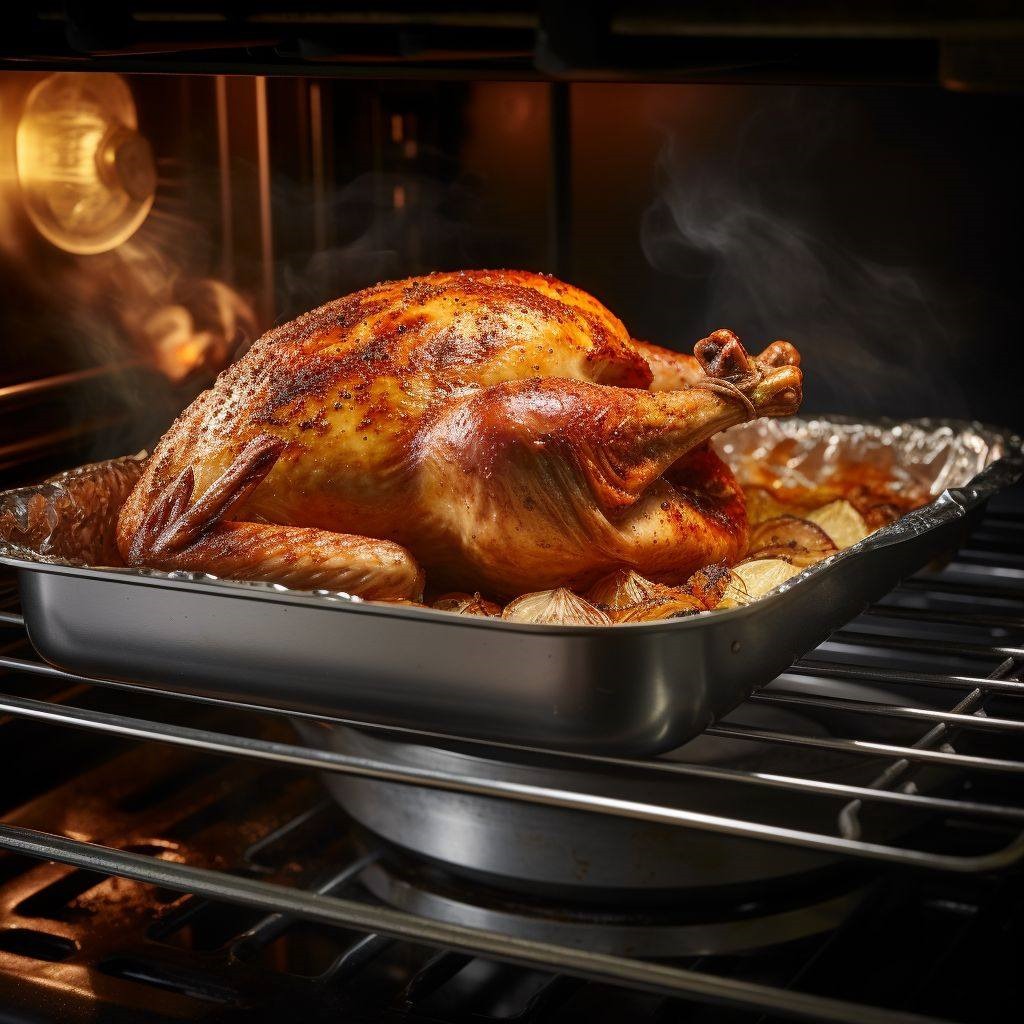ADVERTISEMENT
What Happens if You Don’t Add Water to the Roasting Pan?
While adding water to the pan can offer several benefits, there are also some advantages to roasting a turkey without it:
- Crispier Skin:
- If you prefer a golden, crispy skin, roasting the turkey without water is the way to go. The lack of moisture in the pan allows the skin to dry out and become crispier during cooking. Adding water or liquid can create steam, which may make the skin less crisp.
- Better Roasting Method for Larger Turkeys:
- If you’re roasting a large turkey, the water in the pan might prevent the bird from browning properly. Instead, some cooks prefer to cook the turkey on a rack, allowing the heat to circulate around the turkey and ensuring that the skin crisps up while still retaining moisture.
- Concentrated Drippings for Gravy:
- Roasting without water creates a more concentrated version of turkey drippings. If you want a flavorful, robust gravy, the absence of water can result in more intense turkey flavor. You can also add vegetables or aromatics to the pan to enhance the gravy’s taste.
When Should You Add Water to the Pan?
If you do choose to add water or liquid to the pan, here are some tips on when and how to do it:
- Start Dry, Add Liquid Later:
- To get crispy skin, start roasting the turkey without any water. Once the turkey has browned and the skin has begun to form, you can add water or broth to the pan if you want to keep the turkey moist and make gravy later.
- Baste Occasionally:
- If you do decide to add water, consider basting the turkey with its own juices or additional liquid every 30 minutes to ensure it stays moist. However, frequent opening of the oven can reduce the overall temperature, so try to minimize this as much as possible.
- Use a Roasting Rack:
- Consider using a roasting rack if you’re adding water. This allows the turkey to sit above the liquid, so it doesn’t get soggy. The rack will also help air circulate around the bird, leading to a more even roast.
- Flavorful Broth or Wine:
- Instead of just adding plain water, try using chicken or vegetable broth, white wine, or even a combination of both. These liquids will infuse the turkey with added flavor while still creating moisture for the drippings and gravy.
When Should You Skip Adding Water?
While water can be helpful, there are some cases when it’s best to skip this step:
- If You Prefer Crispy Skin:
- If achieving a crispy, golden skin is a priority for you, skip the water. The skin will crisp up more effectively without the moisture in the pan.
- When Using High-Heat Roasting:
- Roasting the turkey at high temperatures (like 425°F or above) works best without water. This method allows for quick browning and crisping of the skin. Adding water may reduce the effect of this high-heat cooking method.
- Smaller Turkeys:
- For smaller turkeys (under 10 pounds), you might not need to add water at all. Smaller birds cook faster, and a dry roast may yield better results in terms of flavor and texture.
Conclusion: Water or No Water?
The decision to add water to the turkey pan while roasting ultimately depends on your preferences for skin texture, moisture, and gravy. If you want a juicy bird with flavorful drippings for gravy, adding water is a solid option. However, if you’re after crispy skin and concentrated turkey flavor, roasting without water may be the better choice.
No matter which method you choose, following the proper cooking times and temperatures will ensure your turkey turns out perfectly. Whether you decide to add water or not, with the right technique, you’ll have a delicious and beautiful turkey for your holiday table.
ADVERTISEMENT
ADVERTISEMENT
